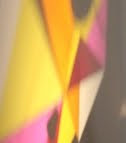the goetheanum...

i recently found a book on rudolf steiner's architecture from the late 1920's with a surprise hiding between a few of the pages... a newspaper insert from january 1929, announcing steiner's recently completed second goetheanum in dornach switzerland (just outside of basel).
the insert shows steiner's massive concrete structure during construction and right about the time it was finished. it's a remarkable structure that i was fortunate to visit last year (on a pilgrimage that also included the emma kunz museum, and corbusier's chappel at ronchamp). although it's about as far as you can get from the humble scaled structures i generally love (corbusier's cabin, the schindler house, etc.); steiner's massive statement still managed to kill me. it's such a unique structure for the time (and still feeling that way 80 years later); that it becomes a kind of outsider architecture, as steiner was thinking mostly about spirituality; and looking at nature as a model rather than architecture. it was a very different use of nature as inspiration than architects like victor horta or frank lloyd wright; it was part of a whole world steiner was developing around nature that included architecture, dance, and even something called biodynamic gardening).
i'm consistently amazed how little the goetheanum is discussed in terms of architectural history; and am guessing it has to do with steiner's ideas surrounding anthroposophy and the fact that the structure still operates as a bustling study center devoted to steiner's ideas. regardless of intentions, there is no denying how progressive the forms of this structure are in relation to traditional structures and material uses of the time - visually connected more to some of the set designs from the cabinet of dr. caligari. steiner's choice of concrete was not only towards the creation of the goethanum's organic forms; but because the first goethanum (which was made out of wood) was burned to the ground by an arsonist, this second one becomes an unlikely precedent for the architecture of bunkers built during the second world war. clearly, it would take a lot more than matches to destroy this building!
although i've never read anything to confirm it, i can't imagine the goetheanum wasn't on corbusier's mind when he began his work on the chappel for ronchamp and some of his later concrete works in india.
Labels: architecture, concrete, goethe, rudolf steiner




6 Comments:
cool find - a little gem of modern architecture out there in the world.
it is a great building,
i've seen about a dozen books on his architecture, it seems corbusier would have seen his work.
do you know the perret buildings?
yeah, there are some great books on this stuff, birkhauser has a nice book on his architecture that's remaindered a lot and can be found for very cheap...
i know that one, werner blaser does beautiful books,
these are good:
http://www.stoutbooks.com/cgi-bin/stoutbooks.cgi/15894.html?id=mIIBUrp4&mv_pc=1025
http://www.stoutbooks.com/cgi-bin/stoutbooks.cgi/00800.html?id=mIIBUrp4&mv_pc=1064 (especially this one)
what is the name of the one you picked up?
the japanese one mentions corb, but can't read the language...
i've seen the japanese one, but not the other you mentioned which looks really interesting. i bought a beautiful early book on the wooden goetheanum (#1) called ways to a new style in architecture by rudolf steiner, published in london in 1927, it's text heavy with some beautiful photos, oversize book, unfortunately runs about $150 on abe... i'll put up some images, quotes, etc. once i get around to reading it... which might take awhile!
Post a Comment
<< Home